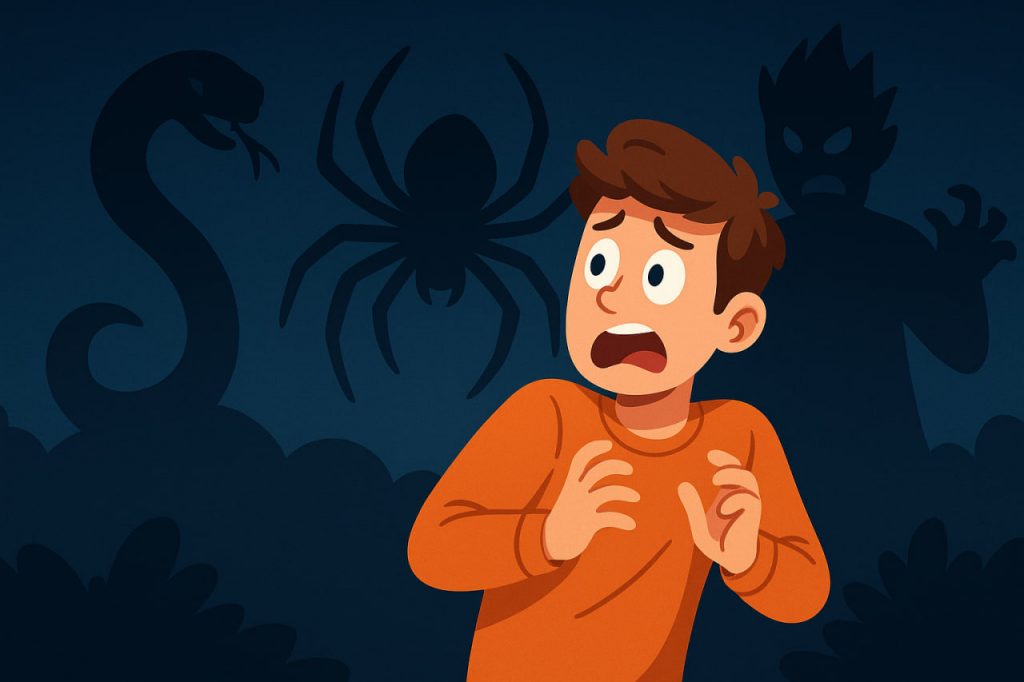Fear is one of the most basic and powerful human emotions. It acts as an alarm system that warns us about potential danger, triggering physical and psychological responses to help us survive. While fear can be useful for protection, excessive or irrational fear may develop into anxiety disorders or phobias that interfere with daily life.
What Is Fear?
Fear is an emotional and physiological reaction to a perceived threat. It can be triggered by real dangers, such as an approaching predator, or by imagined situations, like fear of failure or social rejection. The response originates in the brain’s amygdala, which rapidly processes danger signals and prepares the body for action.
The Fight-or-Flight Response
When fear is triggered, the body activates the sympathetic nervous system, leading to:
- increased heart rate and breathing,
- release of adrenaline,
- heightened senses,
- muscle tension,
- sweating and faster reflexes.
This fight-or-flight response prepares a person to confront or escape danger.
Types of Fear
- Innate fears: present from birth, such as fear of loud noises or falling.
- Learned fears: developed through personal experience or cultural influence.
- Phobias: intense, irrational fears of specific objects or situations (e.g., spiders, heights).
- Social fears: fear of judgment, embarrassment, or rejection.
Fear and the Brain
Fear begins in the amygdala but involves other brain regions, including the hippocampus (which adds context) and the prefrontal cortex (which regulates and interprets fear). This system explains why some fears are instinctive, while others are shaped by memories and experiences.
The Positive Role of Fear
- Survival tool: fear helps humans avoid danger.
- Motivation: it can push people to prepare and improve.
- Social bonding: shared fear in groups can strengthen connections.
When Fear Becomes Harmful
Chronic or exaggerated fear can lead to problems like:
- anxiety disorders,
- panic attacks,
- post-traumatic stress disorder (PTSD),
- difficulty making decisions or living normally.
In such cases, professional therapy, mindfulness, and gradual exposure techniques can help.
Conclusion
Fear is a natural, protective response deeply rooted in human evolution. While it can save lives, excessive fear may limit personal growth and well-being. Learning to understand and manage fear is essential for maintaining both mental and physical health.
Glossary
- Amygdala – brain structure that processes emotions like fear.
- Fight-or-flight response – the body’s automatic reaction to danger.
- Phobia – an irrational and intense fear of something specific.
- Sympathetic nervous system – part of the nervous system that activates stress responses.
- PTSD – a mental health condition caused by experiencing trauma.


